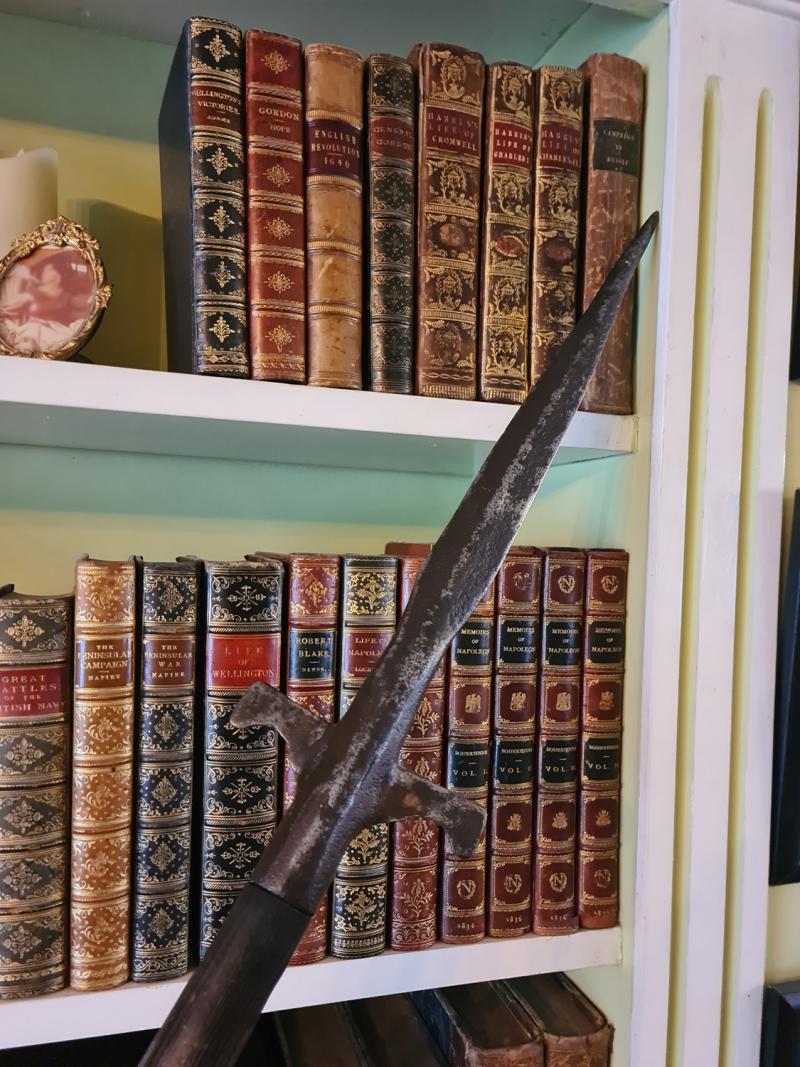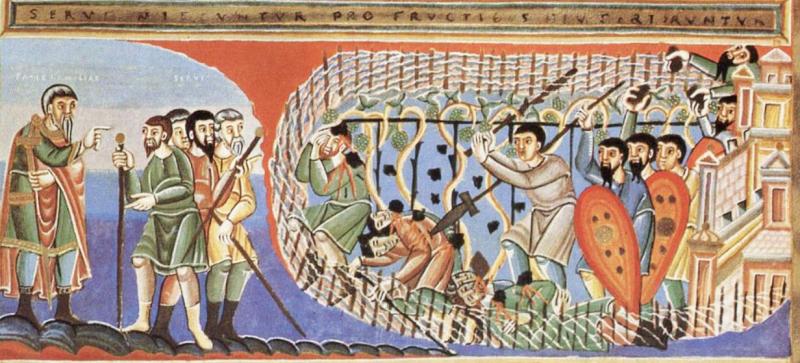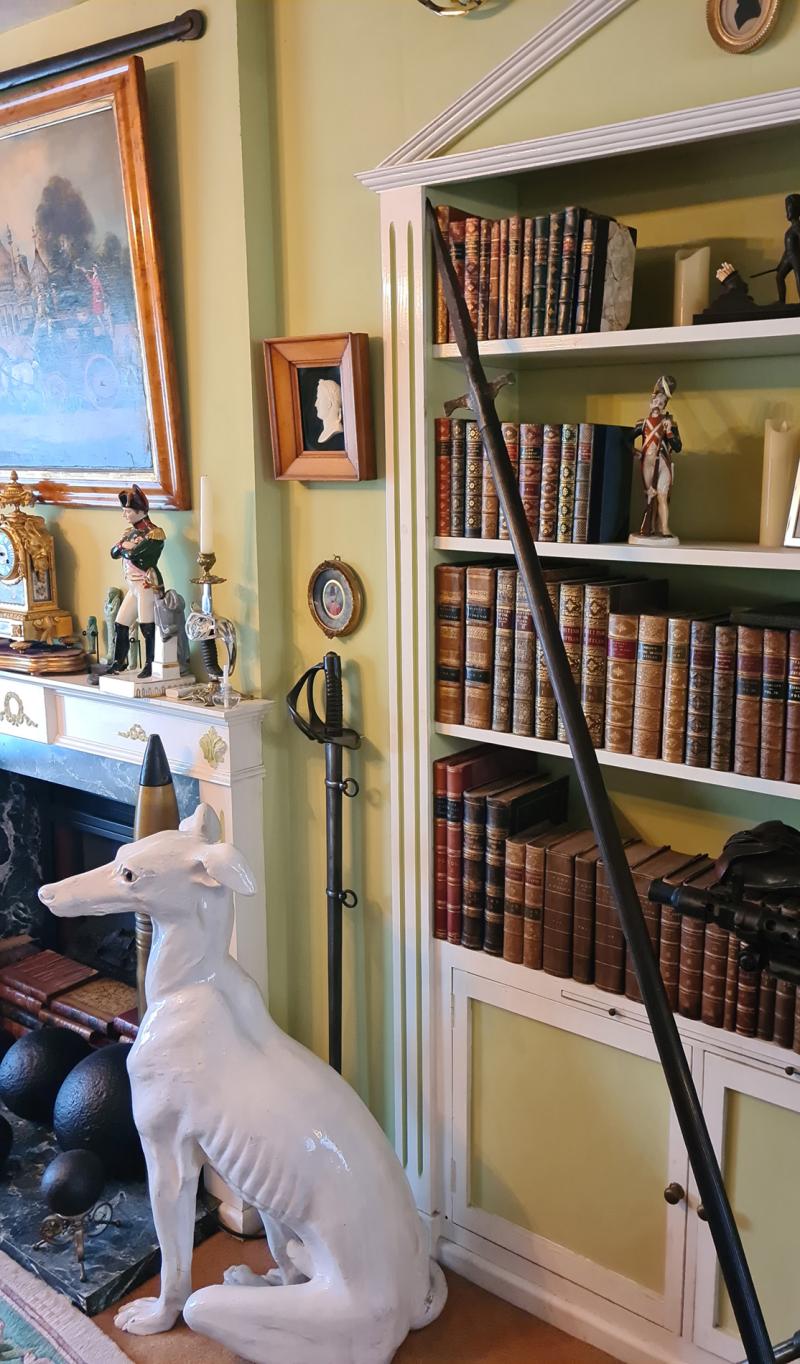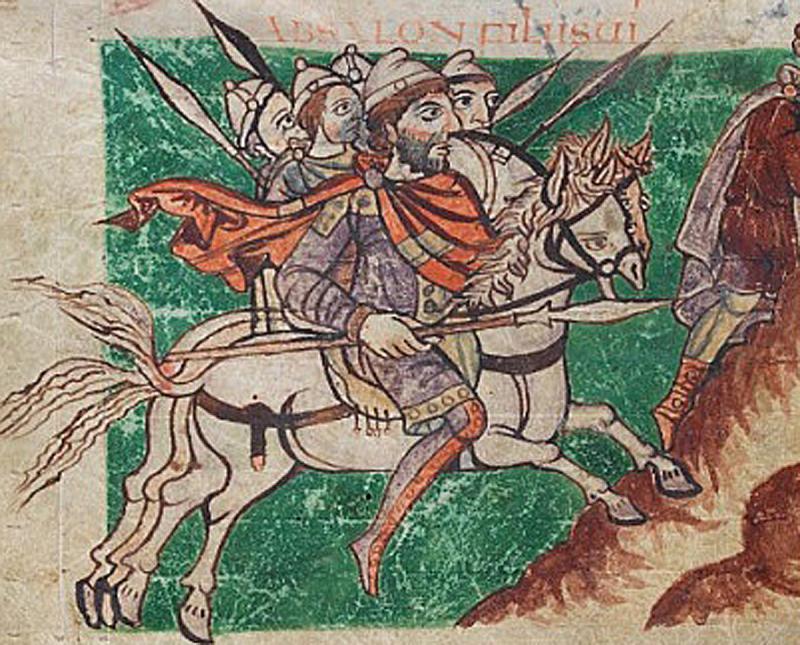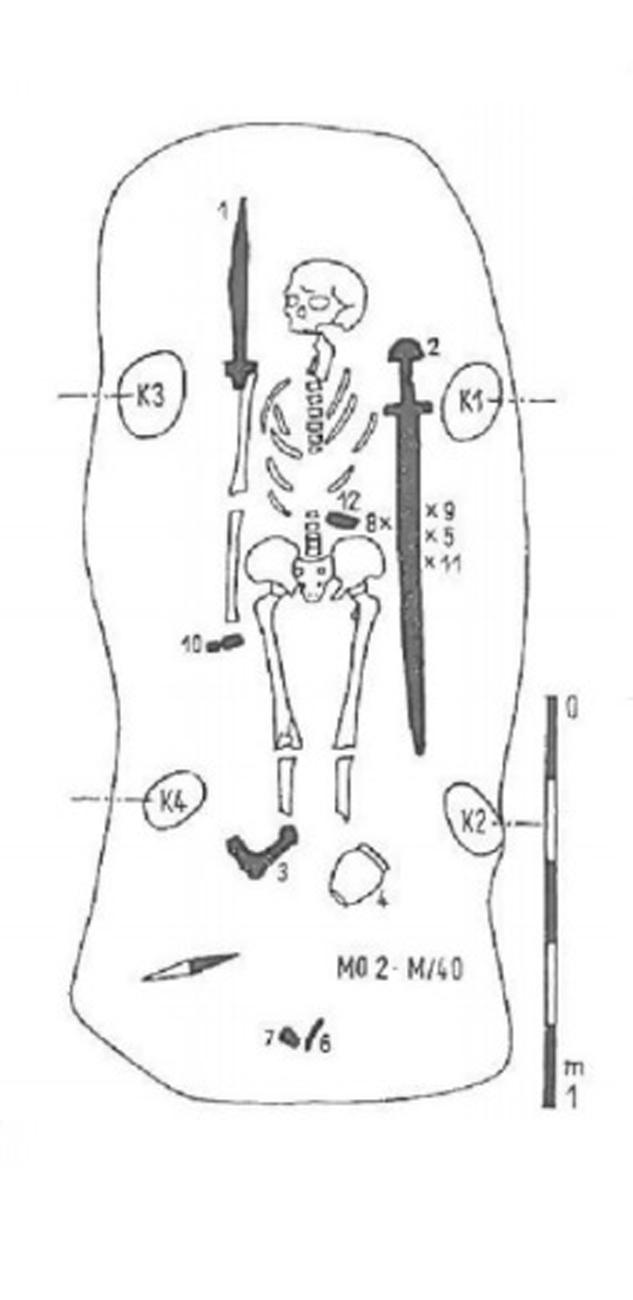A Superb Old English-Viking Large 'Winged' Spear Javelin Head With Later Haft. A Vital Component in 'Shield Wall' Battles Over 1000 Years Old
Overall darkened natural patina with age and areas of a pitted surface, but overall in incredibly well preserved condition. Diamond section blade round socket with a pair of flat topped wings square section semi hooked below. It has three double rivet holes at the base of the socket for haft fixing.
The later haft was created for a museum type display to show how it was originally used. Although recovered a long time past, it was incredibly fortunate it was buried an area, likely in England, that was in a highly inorganic material that caused minimal degradation and corrosion over the past millennia, such as fine textured clay soils.
Although some of the leaf spears were light and controllable with one hand, the more massive spearheads were undoubtedly two-handed and suitable for heavy cut-and-thrust, usable as swords in all respects. Their functional aspect is often multiplied by wings, which, among other things, act as a cross-guard. When used on ground, these massive variants had to be exceptionally useful against both cavalry and infantry, while in cavalry use they could be used as cutting, anti-infantry weapons. It is difficult to imagine that such massive spearheads would be placed on very long shafts. In iconography, the spears are usually as high or slightly taller than the wearer. In archeology, the spearheads are often located next to the head, but it is not clear whether the shaft was broken before being placed in the grave or not (eg Belošević 2007: 275; Kouřil 2005: Abb. 4, 6, 15, 16).
Anglo-Saxon England or Early Medieval England, existing from the 5th to the 11th centuries from soon after the end of Roman Britain until the Norman Conquest in 1066, consisted of various Anglo-Saxon kingdoms until 927, when it was united as the Kingdom of England by King Æthelstan (r. 927–939). It became part of the short-lived North Sea Empire of Cnut, a personal union between England, Denmark and Norway in the 11th century.
The typical battle involved both sides, Anglo Saxons, and Vikings or Normans forming shieldwalls to protect against the launching of missiles, and standing slightly out of range of each other.
Stephen Pollington has proposed the following sequence to a typical shieldwall fight . {Stephen Pollington is an English author who specialises in Anglo-Saxon England and the Old English language}
Preliminaries – The lines are drawn up and leaders make pre-battle inspirational speeches
Advance to close quarters – A battle cry would be raised and one or both shieldwalls would advance
Exchange missiles – Both sides shoot arrows and throw javelins, axes and rocks to break the enemy's resolve
Shield to shield – One or other side closes the short gap and attacks, using spears and swords, protecting themselves and pushing with shields to try to break the enemy line. If neither line broke, both sides would draw back to rest. More missiles would be exchanged, and then the two lines would close again. This would continue until one line broke through the other, perhaps aided by the death of a leader or capture of a banner.
Rout and pursuit – One side would begin to give way. A final stand might be made by some, as at Maldon, but most would flee. The victors would pursue, killing all they could catch.
Individual combat style
Individual warriors would run forward from the ranks to gain velocity for their javelin throws. This made them vulnerable due to their being exposed, having left the protection of the shield wall, and there was a chance of being killed by a counter throw from the other side.citation needed This is epitomized in the following excerpt:
"So then did Aethelgar's child enbolden them all, Godric to battle. Often he sent forth spears, deadly shaft sped away onto the Vikings thus he on this people went out in front of battle, cutting down and smiting, until he too on the battlefield perished." (The Battle of Maldon. 320-4.)
If a warrior was killed in the 'no man's land' between shieldwalls, someone from the other side might rush out to retrieve the valuable armour and weapons, such as extra javelins, sword, shield and so on from the corpse. The one best positioned to retrieve the body was often the thrower of the fatal javelin as he had run forward of his shield wall too in order to make his throw. Exposing himself like this, and even more so during his attempt to retrieve the slain's gear, was a great mark of bravery and could result in much valuable personal gain, not only in terms of his professional career as a retainer, but also in material wealth if the equipment were valuable.
Due to the very visible and exposed nature of these javelin-throwing duels, we have some detailed descriptions which have survived, such as the following passage. The first part describes thrown javelin duels, and the latter part describes fighting over the corpses' belongings.
"Advanced again to fierce battle, weapons raised up, shields to defence, and towards these warriors they stepped. Resolute they approached Earl to the lowest Yeoman: each of them intent on harm for the enemy. Sent then a sea-warrior a spear of southern make that wounded the warrior lord. He thrust then with his shield such that the spear shaft burst, and that spear-head shattered as it sprang in reply. Enraged became that warrior: with anger he stabbed that proud Viking who had given him that wound. Experienced was that warrior; he threw his spear forward through the warrior's neck, his hand guiding so that he this ravager's life would fatally pierce. Then he with another stab speedily pierced the ravager so that the chainmail coat broke: this man had a breast wound cut through the linked rings; through his heart stuck a deadly spear. The Earl was the better pleased: laughed then this great man of spirit, thanking the Creator for the day's work which the Lord had given him. And so then another warrior a spear from the other side flew out of hand, which deeply struck through the noble Aethelred's retainer. To him by his side stood a young man not fully grown, a youth on the battlefield, who valiantly pulled out of this warrior the bloody spear, Wulfstan's child, Wulfmaer the younger; and so with blinding speed came the shaft in reply. The spear penetrated, for that who on the Earth now lay among his people, the one who had sorely pierced. Went then armed a man to this Earl; he desirous of this warrior's belongings to take off with, booty and rings and an ornamental sword. Then Byrhtnoth drew his sword from its sheath broad and bright of blade, and then struck the man's coat of mail. But too soon he was prevented by a certain sea-scavenger, and then the Earl's arm was wounded. Fall then to the ground with his gold-hilted sword: his grip unable to hold the heavy sword, or wield the weapon." (The Battle of Maldon. 130-58.)
Reconstructions of fighting techniques suggested by Richard Underwood in his book Anglo Saxon Weapons and Warfare suggest two primary methods of using a spear. You can use it over arm – held up high with the arm extended and the spear pointing downwards. Used this way you could try and attack over the enemy shield against head and neck. Or you could use it underarm with the spear braced along the forearm. This was more defensive and was good for parrying the enemy spear and pushing against his shield to keep him away but was not much use offensively.
Picture in the gallery from the Codex Aureus of Echternach, 1030-1050AD
Germanisches Nationalmuseum in Nuremberg, Germany.
Another picture of an archaeological detailed drawing of a warrior's grave site, showing large winged spear and sword. From Abramowicz – Nadolski – Poklewski-Koziełł 1959:
17 inches long. Weight 0.5 lb
The later haft was made purely for museum grade display purposes, while we can send it within the UK it is far too long to export.
Code: 25386
2595.00 GBP


